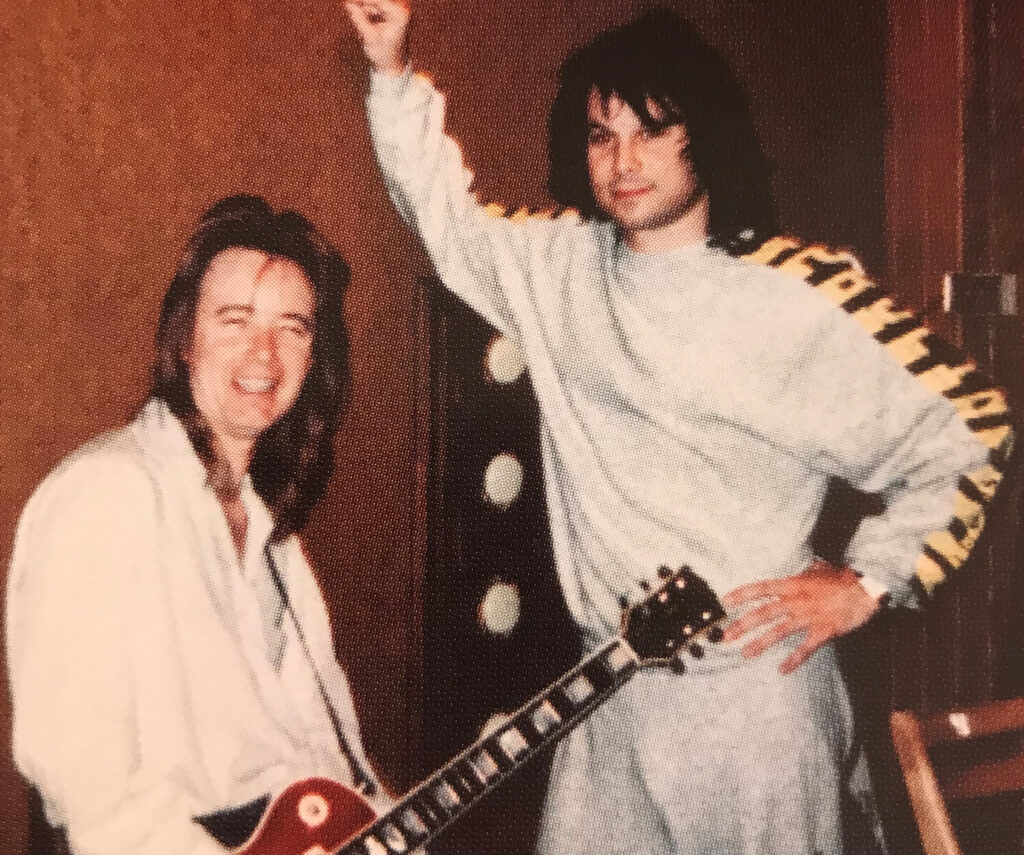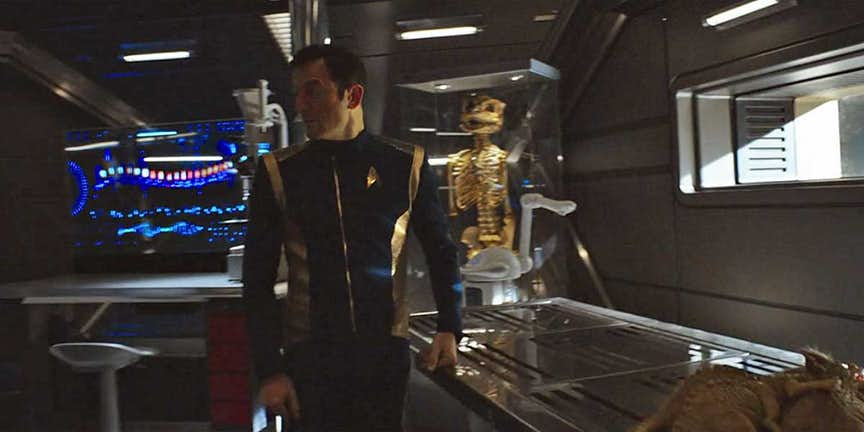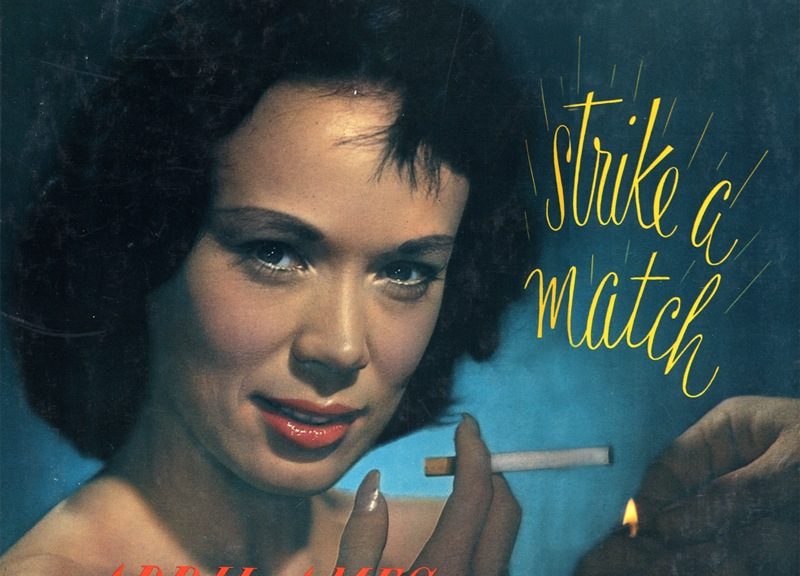Well, it’s 2024 so I made you a Playlist. Crank this baby up for those times when you are chasing those corporate elevator vibes. Show your friends the deep cuts in your musical taste. Defend the questionable atmosphere that this playlist brings down upon your gathering. Lean in.
Just strike a match and you’ll see…
Less “they don’t make them like they used to” and more “you can’t make them like they used to,” April Ames’ 1957 album “Strike a Match” pays homage to the modernly maligned cigarette. With unabashedly celebratory tracks such as “Two Cigarettes in the Dark” and the more punny “I’m Beginning to See the Light,” you’d imagine the record to be a novelty, a fast product for some hopefully quick sales, but you’d be dismissing what’s actually a worthy audio experience.
Ames’ voice and her musicians capture a quintessential 1950s sound in a classic 12 tracks for the most part in the classic 2-3 minute range. Her clear, gentle voice urges a lover to “stop pretending, I know you care” in the playful ‘Where There’s Smoke There’s Fire” but it’s hard to not raise an eyebrow at “puff, puff, puff your cares away; puff, puff, puff night and day” from ‘Smoke Rings.’
The musicianship of the Hal Hidey Ensemble can’t be faulted, and the album has been expertly mastered for digital and sounds just like it should. Give the album a whirl on Spotify, above, but you should be able to find it everywhere including iTunes and Apple Music.
$10 of $35 on CDs for April
New online store is live!
While we are big fans of all things retro, music and soundtracks are one thing but our website was… functional, shall we say? Hopefully this modest modernisation suits us all a little better.
Click here for the new storefront – GNP Crescendo Records
Kim Simmonds 1947-2022
My friend and colleague Kim Simmonds now resides in guitar heaven. Kim and I had a fruitful, years-long collaboration. He was indeed a clever, gifted and easy-going cat; definitely a rock-star and one of the highest pinnacles of blues guitar. I was lucky and proud to work with him on three successful albums and many tour dates all over the U.S.
He’s boogiein’ with the legends now.

-Neil Norman
Star Trek New and Old: Where do your opinions fall on “Nu-Trek?”
Our long history with the traditional Star Trek franchises could make us understandably biased. But what of Gene Roddenberry’s vision of infinite diversity in infinite combinations? Whether you think Strange New World‘s Kirk was on the money or that Disco‘s Philippa Georgiou was taken from us way too quickly, it’s fair to say that we are living in interesting Star Trek times.
Old scores and new
Personally, I love Jeff Russo’s Discovery theme and I never skip the credits. The music and the graphics sequence are a treat. It’s the stand-out for me amongst all the shows in their current runs. In the process of building out a new ecommerce presence for us, adding the Star Trek: First Contact and Generations products I couldn’t help but compare the composers and scores. Themes need to be thematic, of course, but what of incidental music for the shows? I know some complaints are heard that some of the television scores were tame and shrank into the background, but is that maybe appropriate for more character or plot-driven sequences? As you are listening to your scores or soundtracks are you reliving the experience of the action? Or do you need them to melt into your own current background? I’m curious about where and how people listen.
Sci-Fi or Horror?
If you’ve been keeping up with Strange New Worlds, I wonder if you found the Gorn episode reminiscent in style to First Contact? First Contact is my favourite Trek movie and it’s the horror element I think that elevates it for me. Along those lines I thought the fourth episode of Strange New Worlds, “Memento Mori,” was the stand-out of the season. I wouldn’t call myself a horror fan, in general, but when Trek dips into it I find it irresistible. Definitely a sometimes thing, but definitely welcomed when sprinkled in and done well. As someone raised on The Next Generation more than the Original Series, I was yet familiar with the Gorn and a little dismissive of the idea of it as a modern villain. Sometimes it’s good to be wrong!

Callbacks
I am really appreciating the way the new Star Trek shows are reinvigorating the rich lore and mythology that we are all invested in. They are re-opening the extant canon for us to take a fresh look at. The music is receiving nods of its own, with thematic fly-bys of familiar sounds and sometimes, as in Spock’s Strange New Worlds dream of fighting T’Pring with front-and-centre homage. In this case, to the Original Series “Amok Time” music cue.
Which is all to say, now is a good time to revisit the old scores and see what nods and parallels are present. The first Star Trek: The Original Series collection is available on CD from our website. If you prefer you can also find it on Apple Music and iTunes, as well as Spotify and many other streaming services.
Knockers Up! This Friday at Noon
While we wait for the Vimeo link to the documentary to go live, let’s enjoy some Rusty imagery!


The documentary will be available to rent and buy at https://vimeo.com/ondemand/rustywarren – put it on your schedule for the weekend!

Do you have a favourite song or memory of Rusty? Were you an adult attendee at one of her shows, or like so many others did you sneak a listen to your parents’ party records?
From Songs for Sinners to Sexplosion – there’s plenty to choose from to reminisce about. Sinsational, In Orbit, Rides Again, Lays It On The Line, Bottoms Up, Bounces Back… the list is extensive.

In this career retrospective, see why Rusty was considered by some a mother of the sexual revolution. Relive the old days of nightclub acts and the heyday of racy comedy. See what the lady behind the laughs has to say about it all.

The New York Times points out that what now seems “retro and regressive” was cutting edge for the time:
“I told the women to march with their boobs held high,” she told The Las Vegas Sun in 1978, “knockers up, so to speak, and a new phrase was born.”
NY Times
The bit became so popular that Jerry Blaine, the owner of Jubilee, decided to flaunt it by naming her second album after the phrase.
“And they said: ‘You wouldn’t dare. How are you going to sell it? Where are you going to put it? No one is going to take it,’” Ms. Warren told Kliph Nesteroff, a scholar of comedy, in a 2010 interview. “Jerry says, ‘Watch me.’”

So Friday September 10th at noon PST – get those Knockers Up!
Rusty Warren Documentary Gets Digital Release Date
Born in New York City and raised in Boston, Rusty Warren began studying classical music when she was six years old and in time studied at the New England Conservatory of Music. Finding that the academic arena was not one she was suited to, she began playing piano around Boston in small clubs and hotels, and there got her initial taste of – and for – the stage. Her natural talent for engaging her audience became apparent, and she developed a keen ambition to pursue her career in show business.
As her flair for creative comedy and quick repartee grew, she began adding more jokes and humorous lines to her repertoire. More and more original material followed, until she had built up a unique routine based on personal observations of people and serious study of human nature.
As we covered in a post not long ago, Rusty Warren passed away earlier this year. Amongst other outlets, The Advocate noted her life in an article, writing that “She became famous in the 1960s with her nightclub appearances and comedy albums, performing routines and songs usually described as “bawdy.” She dealt frankly with sex and encouraged women to enjoy it openly. Her song titles include “The Knockers Up March” from her second album, Knockers Up, and “Bounce Your Boobies.” She became known as “the mother of the sexual revolution.”
1955 saw Rusty’s big break, when she was brought out to perform engagements on the West Coast, and she was big enough by 1958 to record her debut album “Songs for Sinners.” Rusty really came into her own after that, recording “Knockers Up” in 1961, a record that eventually went gold, selling over two million records. In 1963 Rusty was awarded the industry title “Best Selling Comedy Recording Artist of the Year.”
Rusty continued to cover new ground as the foremost comedienne in the business, breaking attendance records in Las Vegas and drawing huge crowds all over the West Coast. Club owners fought to book her. What kind of philosophy could speak to so many people?
“We all enjoy sex, but let’s laugh about it,” said Rusty. “Let’s have a little fun with our problems. I do not indulge in dirty talk just for the sake of shock.”
Musician, singer, comedienne, anthropologist, psychologist, businesswoman – she has many feathers to her bow, but most of all Rusty Warren is an entertainer. She has an enviable insight into the frailties of men and women and a rare ability to talk about them and make everyone laugh. Rusty has a true gift, and shares her story in this documentary.
Rusty Warren: The Lady Behind the Laughs has its digital premiere on Friday September 10th on Vimeo. At noon Pacific Standard Time, it will be available to rent and buy here: https://vimeo.com/ondemand/rustywarren
Rusty Warren: Knockers Up – Cabaret and Comedy as Tools of Change
“Always have the courage to say what you want. Few women do.”
The late Sophie Tucker thus advised Rusty Warren many years ago. Although Rusty avoided expletives and “four letter words” in her cabaret and comedy, her for-the-time daring innuendo nonetheless pushed the envelope far enough for her to be considered too vulgar for regular broadcast. Rusty had courage in saying out loud what had for so long been taboo, and she also had smarts to choose comedy and cabaret as her medium. Critiques of her forwardness and outrageousness may have kept her from the kind of mainstream fame achieved by some of her peers, but her reputation drove a career of astonishing sales and some of the highest pay of any nightclub comedians of her time.

GNP is working to bring our 2008 documentary to Vimeo for streaming rental and purchase. Look for it in September.
Having lost Rusty earlier this year, many people and outlets have a lot to say about her life and career in cabaret and comedy. The sad news seems to have broken on The Laugh Button with people remembering her as fans and friends.
The Washington Post also wrote at length about her life and times. Matt Shudel writes about how “she was considered daringly original for her frank and racy jokes about breasts — for which she used a variety of terms — the fragile male ego and the hidden desires (and fears) of women.”
The Laugh Button summarizes well: “In a time when comedy was considered to be a “boys club”, Warren was one of the few female comedians of that era that embraced it head on. And while she never reached the acclaim that others at the time got, she managed to still break down barriers nonetheless. And given the frank and bawdy routines that she would perform onstage back when it was still considered taboo to not be “ladylike,” she was once heralded as the “mother of the sexual revolution.””
Muddy waters live in los angeles 1954
>> Link to purchase<<
• GNP Crescendo proudly presents a brand new, never-before-heard recording that is essential listening for any student of the blues. Live In Los Angeles 1954 captures the father of the electric blues, Muddy Waters, at the peak of his powers, in a riveting performance that easily explains an immense reputation that continues to this day.
• Muddy and his band were appearing at one of deejay and impresario Gene Norman’s legendary blues and jazz promotions at the Shrine Auditorium, which drew unprecedented mixed race crowds to hear some of the best talent the black music world had to offer. On this particular occasion, Muddy’s ensemble featured such luminaries as pianist Otis Spann and harmonica legend Little George.
• Their twenty minute set includes the blues classics made famous by Muddy, ‘Hoochie Coochie Man’ and ‘I Just Want To Make Love To You,’ along with exciting romps through ‘Baby Please Don’t Go’ and ‘I’m Ready,’ and there is the bonus of a brief interview with the great man.
• The tape of the performance has lain in the Crescendo vaults for decades, until dusted off for this special issue. The sound quality is sensational for a recording of such vintage, and the package is presented on 10-inch vinyl in a deluxe tip-on sleeve, with art in the mode of the iconic early 1950s Gene Norman Presents releases.






